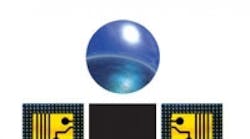Think of it as a better mousetrap -- except the engineers at Purdue University, West Lafayette, Ind., aren't hunting mice. They are harvesting hydrogen. While fuel-cell technology is nothing new, methods for producing hydrogen -- the fuel that drives the fuel cell, which in turn produces electricity to charge a battery -- are constantly being re-evaluated to find a better, more efficient and cost-effective way.
One method, developed 63 years ago by Herbert C. Brown, a chemist and Nobel laureate from Purdue, produces hydrogen by combining sodium borohydride with water and a catalyst. The drawback: The catalysts are expensive.
Another method involves a chemical reaction in which tiny particles of aluminum are combined with water in such a way that the aluminum ignites, thus releasing hydrogen during the combustion process. While this process isn't expensive, it does not yield sufficient quantities of hydrogen for fuel-cell applications.
View Past Technology Leaders
View The 2005 Winners
Enter Arvind Varma, professor of chemical engineering and head of Purdue's School of Chemical Engineering; Evgeny Shafirovich, research scientist; and Victor Diakov, postdoctoral research associate.
The Purdue researchers first started toying with a new way to produce hydrogen for fuel cells in October 2004. The approach: Combine the two known processes. Their early experiments yielded encouraging results.
"We combined these two reactions into one single setup in which both reactions occur simultaneously," Varma says. "What we've done is replaced the activation of the borohydride reaction with water, and instead of being done with a catalyst, it is done with the heat that is liberated by the second reaction. We call the chemical mixture to carry out both reactions a triple borohydride-metal-water mixture. So far we have shown in experiments that we can convert 6.7% of the mixture to hydrogen, which means that for every 100 grams of mixture, we can produce nearly 7 grams of hydrogen, and that yield is already better than alternative methods on the market."
What does 7 grams of hydrogen mean? "With a normal lithium ion battery, the energy it produces is 0.2 watt hours per gram -- this is the upper limit, but let us be generous!" notes Varma. "With the hydrogen fuel cell we [estimate] that we can get on the order of 1.0 watt hours per gram -- that's a conservative estimate. What we have not done is put the hydrogen into a fuel cell. We have assumed the efficiency."
The researchers envision a system in which pellets of hydrogen-releasing material would be contained in disposable credit-card-sized cartridges, which would be available where consumers buy batteries. A computer chip would automatically detect when the battery needed to be recharged, activating a new pellet until all pellets on the cartridge were consumed. Once the pellets were used up, a new cartridge would be inserted into devices such as cell phones, PDAs, notebook computers, digital cameras, handheld medical diagnostic devices and defibrillators.
According to Varma, the spent cartridges are not dangerous to the environment. Also, he notes that once investors step up to the plate, the vision could be turned into reality in about a year.





